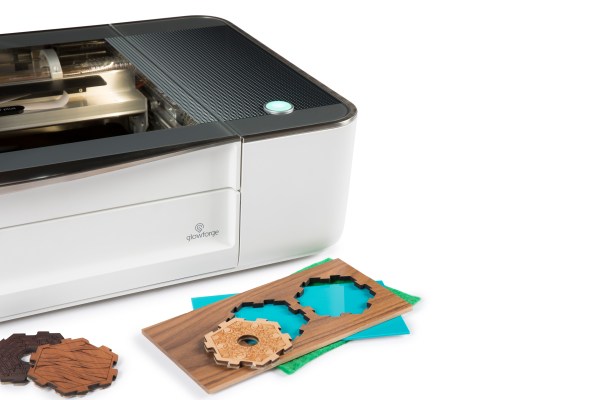Seattle-based laser-cutting hardware startup Glowforge announced this morning that it has raised another healthy round. The $43 million Series E joins the roughly $70 million the company has raised since its 2015 founding.
It’s been a few years since the firm has had a significant raise, but the DFJ Growth-led round will go toward accelerating R&D and commercialization for the company’s products. The company has carved out a nice niche for itself over the past 8 years, courtesy of its laser-cutting and engraving systems.
The company’s latest — the Glowforge Pro — is being positioned as a “3D laser printer.” At its heart, the $7,000 system is a streamlined CNC machine with all the modern amenities, including Wi-Fi connectivity and a camera for watching the project unfold in real time.
“We founded Glowforge because we believed in a world where people created things for themselves, at home,” cofounder and CEO Dan Shapiro says in a release. “With this fundraise, Glowforge has the resources to expand our vision to empower the world to make magical things.”
The hobbyist market tends to have its limitations — just ask anyone who’s ever made a desktop 3D printer. The company did get off to a solid start, raising more than $27 million in its first crowdfunding campaign.
Education has, predictably, proven a solid growth market for the company as well. That’s precisely the reason 3D printing firms shifted their focus to the classroom as they hit a very real ceiling in the home/enthusiast market.
“The Glowforge printer serves as a creator’s personal factory,” DFJ partner, Barry Schuler, says in the release. “Dan and his team are on a mission to democratize access to professional-quality creative capabilities by enabling creators to bring their imagination into the physical world just minutes out of the box.”
The company has thus far carved out a niche for itself, with well-designed, user-friendly systems with a proportionally high price tag. And while competition isn’t quite as stiff as it was at the height of the 3D printing boom, questions still linger about how much addressable market there is for such specialty devices.
